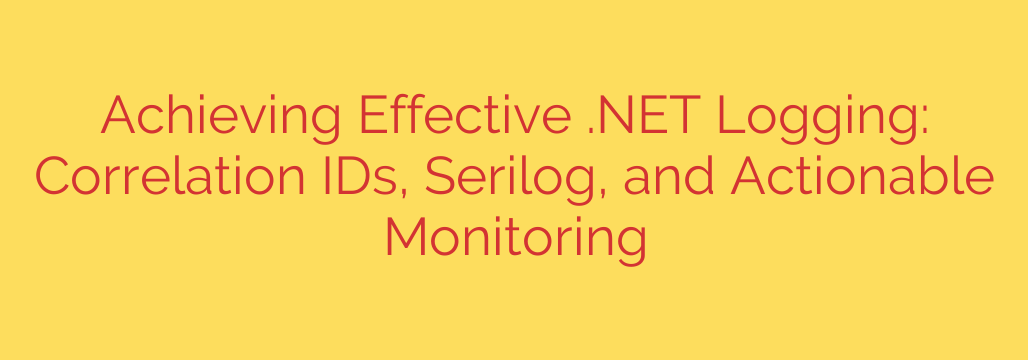
Debugging modern applications, especially those built on the .NET platform in a distributed systems environment, can be incredibly challenging. When a user reports an issue or an error occurs, tracing the exact sequence of events that led to the problem across multiple services or even within a complex monolithic application is often like finding a needle in a haystack. This is where effective logging becomes not just helpful, but essential.
Simply writing messages to a log file isn’t enough. To truly understand what happened during a specific request or workflow, you need a way to connect related log entries. This is the primary function of a correlation ID. A correlation ID is a unique identifier assigned to the very beginning of a request or operation. This ID is then propagated through every service, component, and process involved in handling that request. By including the same correlation ID in every log message generated during that specific operation, you can easily filter your logs to see the complete story of that single transaction, even if it spanned multiple machines or services. Implementing this in .NET often involves using middleware to generate the ID at the entry point (like an ASP.NET Core request) and associating it with the current execution context, perhaps using Activity.Current or HttpContext.
Beyond simply having an ID, the logging framework you choose significantly impacts usability. Serilog stands out as a powerful and flexible logging library for .NET. Its key strength lies in structured logging. Instead of just logging a string message like “User 123 placed order ABC”, Serilog allows you to log objects and properties. This means you can log { UserId: 123, OrderId: "ABC" }. This structured data is machine-readable and highly searchable, making it far easier to query and analyze your logs later. Serilog’s architecture also supports various “sinks,” allowing you to send your logs to different destinations simultaneously – from plain text files and the console to powerful log aggregation systems and databases. Integrating the correlation ID with Serilog is straightforward; you can configure it to automatically include the correlation ID (retrieved from the current context) as a property on every log event.
However, generating logs and including correlation IDs with a framework like Serilog is only half the battle. The true power comes from making that logging actionable. This means moving beyond simple storage to active monitoring and analysis. Actionable monitoring involves using tools and systems that can ingest your structured logs, allow for sophisticated searching and filtering by correlation ID and other properties, visualize trends, and, critically, trigger alerts when specific error conditions or patterns are detected. Systems like the Elastic Stack (Elasticsearch, Kibana), Seq, Splunk, or cloud-native services provided by AWS, Azure, or GCP are designed for this purpose. They turn a flood of log data into a valuable source of operational intelligence.
By implementing correlation IDs, leveraging a robust structured logging framework like Serilog, and integrating with powerful log monitoring platforms, developers and operations teams gain unprecedented visibility into the behavior of their applications. This leads to faster debugging, quicker identification of root causes, proactive issue detection through alerting, and ultimately, more stable and reliable software. Effective logging transforms from a burdensome task into a vital component of a healthy application lifecycle.
Source: https://itnext.io/mastering-logging-in-net-correlation-ids-serilog-monitoring-that-actually-works-3492b4eefae9?source=rss—-5b301f10ddcd—4








